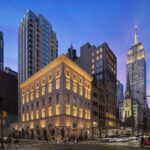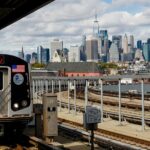I’ve spent years planning, attending, and writing about New York City’s most vibrant events, and I can tell you this with confidence: NYC cultural festivals 2025 will be bigger, more diverse, and more accessible than ever. From heritage parades to neighborhood street fairs, these celebrations spotlight the city’s living tapestry—Latin, Caribbean, Asian, African, Middle Eastern, European, and Indigenous communities sharing food, music, dance, and stories. In this guide, I break down what to expect, when to go, how to plan, and the insider tips I’ve learned the hard way so you can enjoy NYC’s festival season like a local.

Source: www.bronxbuzz.nyc
Why NYC Cultural Festivals Matter in 2025
NYC’s cultural festivals aren’t just events on a calendar—they’re a yearly pulse check on the city’s identity. In 2025, expect a renewed emphasis on community-led programming, multilingual experiences, and inclusive design. Organizers continue to prioritize pedestrian safety, ADA access, and family-friendly zones while expanding opportunities for local vendors and artists.
Here’s what’s shaping 2025:
- Community impact: Festivals drive real economic benefits for small businesses, especially restaurants, food carts, and artisans. I’ve watched Little Caribbean bakeries sell out by noon during Labor Day Carnival weekend.
- Cultural preservation: Parades like the National Puerto Rican Day Parade and the West Indian American Day Carnival safeguard traditions through music, costumes, and cuisine—turning Fifth Avenue and Eastern Parkway into living classrooms.
- Accessibility and safety: The city’s event permitting and street-closure protocols help keep crowds manageable. Expect more hydration stations, medical tents, and clear wayfinding in 2025.
- Tech and ticketing: Mobile ticketing and timed-entry windows are increasingly common for museum-led festivals, reducing wait times and improving crowd flow.
If you’re planning a culture-first visit, 2025 is the perfect year to do it.

Source: www.brooklynblvd.nyc
Key Festival Calendar 2025
Dates can shift year to year. Always confirm with official organizers before you go. Here’s a reliable, research-backed snapshot of major NYC cultural festivals 2025 by season, plus my notes from attending many of these over the years.
Winter
- Lunar New Year (January–February): Chinatown Manhattan and Flushing, Queens glow with firecrackers, lion dances, and food stalls. Tip: Arrive early on parade day to snag curb space; bring earmuffs if you’re sensitive to noise.
- Harlem’s Black History Month events (February): Talks, performances, and exhibitions across Harlem and citywide cultural centers.
Spring
- Holi Festivals (March–April): Color-throwing festivals in Randall’s Island and community parks. Wear white, bring a mask for powder, protect your phone.
- Immigrant Heritage Week (April): Citywide programming celebrating immigrant contributions—panels, food tours, and pop-ups.
- Sakura Matsuri/Cherry Blossom Festivals (late April): Brooklyn Botanic Garden’s beloved celebration returns with J-pop, tea ceremonies, and ikebana. Timed entry likely.
Early Summer
- Museum Mile Festival (June): Fifth Avenue museums open their doors for free with street programming. I usually start uptown and walk south to avoid bottlenecks.
- National Puerto Rican Day Parade (June): A Fifth Avenue institution with music, flags, and family pride. Expect packed sidewalks; bring water and sunscreen.
- NYC Pride March and PrideFest (late June): One of the world’s largest Pride celebrations. Plan transit carefully; stations near the route can get intermittently closed for crowd control.
High Summer
- Harlem Week (July–August): Weeks of concerts, conferences, and a lively street fair. The uptown food vendors are a highlight—save room for jerk chicken and shaved ice.
- Dominican Day Parade (August): Vibrant music, flags, and dance along Sixth Avenue.
Late Summer to Fall
- West Indian American Day Carnival (Labor Day Weekend): Eastern Parkway in Brooklyn transforms with mas bands, steelpan, and food. Pre-dawn J’Ouvert is moving and historic—go with friends and follow NYPD guidance for route safety.
- San Gennaro Feast (September): Little Italy’s cannoli-eating contests, processions, and live music. Even weeknights get crowded—arrive before 6 p.m.
- African American Day Parade (September): A treasured Harlem tradition highlighting community leadership and culture.
- Atlantic Antic (September): One of NYC’s oldest street festivals spanning multiple blocks in Brooklyn with food from around the world.
- Open House New York Weekend (October): Architecture and culture meet. Access normally closed spaces across boroughs—reserve popular sites early.
- Diwali Celebrations (October–November): South Asian music, rangoli, and sweets in Queens and across the city. Family-friendly and photogenic after dusk.
Winter Holidays
- Kwanzaa celebrations (December): Look for performances at the Apollo and cultural institutions, plus community markets.
- Holiday markets: While not strictly cultural festivals, Bryant Park, Union Square, and Columbus Circle markets bring international crafts and foods to one place.
Pro tip: Many neighborhoods host smaller, equally meaningful street fairs on summer weekends. Check borough calendars for Astoria, Jackson Heights, Sunset Park, and Washington Heights.

Source: theaterforthenewcity.net
Neighborhood Spotlights and Culture Corridors
NYC’s cultural festivals are best understood block by block. These areas consistently deliver authentic experiences:
- Chinatown and Flushing: For Lunar New Year and regional Chinese cuisines, Flushing’s food courts serve dishes you won’t find elsewhere in the city.
- Jackson Heights, Queens: A crossroads for South Asian, Latin American, and Himalayan communities. I’ve had my best momo and lassi here.
- Little Caribbean, Brooklyn: Along Nostrand and Flatbush Avenues, Carnival weekend explodes with soca, doubles, and roti.
- Harlem: From jazz nights to food vendors during Harlem Week, culture is on every corner.
- Little Italy, Manhattan: San Gennaro brings old-world bakeries and street-side grills to life. Look for the smaller, family-run stands—quality is often better than the flashy ones.
- Arthur Avenue, the Bronx: The Bronx’s Little Italy delivers artisanal cheeses, cured meats, and pastries during festival season without Midtown crowds.
Use festivals as anchors to explore beyond the main stage. Wander a block or two off the route and you’ll find the neighborhood’s true culinary soul.
Planning Tips: Tickets, Transit, Safety, Accessibility
I plan festival days like mini expeditions. Here’s what consistently works:
Tickets and Entry
- Many parades are free. Museum-led or garden festivals often use timed-entry tickets—book early.
- For popular events, choose early or late slots to avoid peak crush.
Transit and Navigation
- Use the subway with OMNY contactless payment. Expect planned service changes on weekends; check the MTA app the night before.
- Stations near major parades may use crowd-control closures. Walk a stop or two away for quicker entry.
- Wear breathable shoes. My step counter regularly crosses 15,000 on big festival days.
Safety and Comfort
- Hydrate: Bring a refillable bottle; look for public fountains or vendor water.
- Sun and sound: Sunscreen, hat, and hearing protection for kids near drums and firecrackers.
- Meet-up points: Pick a landmark in case your group gets separated; cell networks can get overloaded.
Accessibility
- Parade routes typically include ADA viewing areas; arrive early.
- Many major events offer ASL interpretation; check schedules.
- Curb ramps can be crowded—allow extra time and identify alternate crossings in advance.
Photography and Respect
- Always ask before photographing people up close, especially performers and children.
- Support artisans by buying from vendors who make what they sell.
Food, Music, and Art: What To Expect
Cultural festivals are sensory-rich. Here’s how I navigate them with purpose:
Food Strategy
- Start with small bites so you can taste widely: a skewer here, a dumpling there.
- Seek regional specialties: Trini doubles at Carnival, alcapurrias at Puerto Rican celebrations, zeppole at San Gennaro, hand-pulled noodles during Lunar New Year.
- Cash still speeds things up for pop-up vendors, though more accept tap-to-pay in 2025.
Music and Performance
- Time your visit around headliners, but don’t miss side stages. I’ve discovered unforgettable steelpan bands and folk ensembles off the main route.
- Bring a light scarf or bandana for dust or color powder at Holi-style events.
Art and Craft
- Look for makers demonstrating techniques: papel picado, bamboo kites, beadwork, or mas costume design.
- Buy early; one-of-a-kind pieces sell out fast.
Budget and Itinerary Examples
You can experience NYC cultural festivals 2025 on any budget.
Shoestring Day
- Breakfast: Local bakery near the route.
- Free festival or parade: Museum Mile, Pride March viewing, or a neighborhood street fair.
- Lunch: Two vendor bites plus fruit from a street cart.
- Museum or park: Choose a suggested-donation spot afterwards.
Comfort Budget
- Timed-entry ticket: Brooklyn Botanic Garden’s cherry blossom weekend.
- Lunch: Sit-down neighborhood restaurant with a festival special.
- Souvenir: Handmade craft or art print.
One-Day Uptown Culture Loop
- Morning: Harlem food crawl and community market.
- Midday: Festival main stage or parade viewing.
- Late afternoon: Museum stop on Fifth Avenue or a live music set.
- Evening: Dinner along Frederick Douglass Blvd or in Washington Heights.
Pro tip: Build in a 30–45 minute buffer for unexpected detours. Some of my favorite memories came from following the music down a side street.
Family-Friendly and Inclusive Events
Bringing kids or multigenerational groups? NYC festivals excel at inclusive programming.
What Works Well
- Early hours: Less crowded and cooler, ideal for strollers and elders.
- Kid zones: Look for craft tables, drumming workshops, or dance lessons.
- Sensory considerations: Quiet corners exist—parks, libraries, or side streets just off the main flow.
LGBTQ+ Inclusive
- Pride’s family programming and trans-led events continue to expand.
- Many cultural festivals partner with community orgs to ensure safe, welcoming spaces.
Accessibility Tips I’ve Used
- Map restrooms, including accessible ones, before you arrive.
- Pack small snacks and a foldable seat for older relatives.
- Use curb cuts two blocks from the densest crowds for smoother wheelchair navigation.
Sustainable and Respectful Festival Etiquette
Good festival citizenship keeps these traditions thriving.
- Leave no trace: Bring a reusable bottle and tote; sort waste when bins are available.
- Buy local: Support small vendors and artists—it’s how festivals sustain themselves.
- Learn before you go: Read a quick primer on the culture you’re celebrating. A little context goes a long way.
- Dress thoughtfully: Comfortable, weather-appropriate clothing; modest attire may be appreciated at some religiously rooted events.
- Be patient: Crowds ebb and flow. When I slow down, I notice more—and enjoy more.
Frequently Asked Questions of NYC cultural festivals 2025
When do the biggest NYC cultural festivals happen in 2025?
Most major events cluster from late spring through early fall. Expect Lunar New Year in winter, cherry blossoms in late April, major parades in June, Harlem Week mid-summer, West Indian American Day Carnival on Labor Day weekend, and San Gennaro plus heritage parades in September. Verify exact dates with organizers.
Are NYC cultural festivals free?
Many parades and street fairs are free. Some museum-based festivals and garden events use timed-entry tickets or paid admission. Always check official sites for ticketing details and accessibility accommodations.
What’s the best way to get around during festivals?
Use the subway with OMNY tap-to-pay. Arrive a station or two away from major routes and walk in. Expect crowd-control measures at busy stations. Comfortable shoes are essential.
Can I bring kids to these festivals?
Yes. Early hours are best for families. Look for kids’ activities, quieter side streets, and shaded areas. Bring ear protection for little ones near drums or fireworks.
What should I eat at NYC cultural festivals?
Try regional specialties: doubles and roti at Caribbean festivals, alcapurrias and pinchos at Puerto Rican events, zeppole at San Gennaro, dumplings and noodles during Lunar New Year, and mithai during Diwali. Share plates so you can sample more.
How do I find less crowded experiences?
Go early or late, explore side stages, and choose neighborhood festivals outside Manhattan. Weeknight visits to long-running festivals often feel more relaxed.
Conclusion
NYC cultural festivals 2025 offer a rare combination of community spirit, incredible food, and living history—all within a few subway stops. Plan ahead, stay curious, and let the city guide you from one celebration to the next. If you found this guide helpful, subscribe for updates, ask your questions in the comments, and start building your 2025 festival itinerary today.
Watch This Video on NYC cultural festivals 2025






